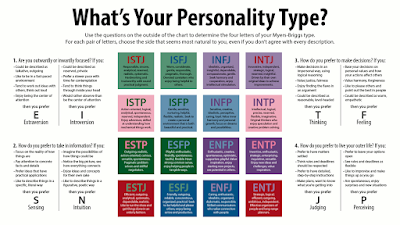Unleashing Imagination: Exploring the 16 Personalities for Fiction Writing
by Olivia Salter
Creating vibrant and relatable characters lies at the heart of captivating fiction writing. A multi-faceted character is not only intriguing, but also adds depth and realism to a story. To achieve this, writers often turn to the 16-personality model, a powerful tool derived from Carl Jung's theories of personality. In this article, we will explore how the 16 personalities can be utilized to construct engaging and well-rounded characters within the realm of fiction.
1. The analysts (INTJ, INTP, ENTJ, ENTP):
The analysts' personalities display an inherent knack for intellectual pursuits. Characters belonging to this category are often brilliant strategists, inventors, or masterminds. Their analytical approach makes them excel at solving complex puzzles, unraveling mysteries, or constructing intricate plans essential for the plot's progression.
2. The Diplomats (INFJ, INFP, ENFJ, ENFP):
Diplomatic characters possess profound empathy and an intuitive understanding of others. They are often portrayed as idealists, peacemakers, and visionaries. Their compassion, coupled with their ability to inspire, helps them guide and support other characters through challenges or conflicts, providing emotional depth to the story.
3. The Sentinels (ISTJ, ISFJ, ESTJ, and ESFJ):
Sentinel personalities are known for their unwavering sense of duty, loyalty, and practicality. Characters embodying these traits are often portrayed as reliable allies or authority figures, maintaining order and stability within the story. Their adherence to traditions, rules, and strong moral compasses can add conflict or tension to the narrative.
4. The Explorers (ISTP, ISFP, ESTP, ESFP):
Explorers possess a thirst for adventure, spontaneity, and a love for the present moment. Characters falling into this category are daring risk-takers who bring excitement and a sense of realism to the plot. They thrive in high-stakes situations, pushing boundaries and adding an element of thrill to the storyline.
Utilizing the 16 Personalities for Character Development:
To maximize the potential of the 16 personalities, writers need to delve deeper into their characters' individual traits, strengths, and weaknesses. Here are some helpful tips to create more authentic and nuanced characters:
1. Use the Myers-Briggs Type Indicator (MBTI):
Explore the various traits associated with each personality type and analyze how they manifest in your characters. Consider their preferences for introversion or extraversion, thinking or feeling, sensing or intuition, and judging or perceiving. This understanding will help give characters distinct perspectives, motivations, and ways of interacting within the story.
2. Balance Strengths and Flaws:
Avoid one-dimensional characters by giving them a mix of strengths and flaws. Real people have their own unique set of abilities as well as weaknesses, and the same should apply to fictional characters. This balance adds depth and relatability and allows characters to grow throughout the story.
3. Create dynamic relationships:
Different personalities often clash or complement each other, leading to compelling dynamics in relationships. Explore interactions between characters with contrasting personalities, sparking conflict, or fostering unlikely alliances. This can lead to engaging subplots and character development arcs.
4. Show personal growth:
Allow characters to evolve and grow throughout the narrative. Utilize the 16 personalities to guide their transformation, highlighting their strengths and weaknesses. This growth can be driven by a change in their preferences or an internal realization that pushes them to reevaluate their beliefs.
In conclusion, the 16-personnel model presents a valuable framework for crafting multidimensional characters in the realm of fiction writing. By understanding the unique traits, motivations, and natural tendencies associated with each personality type, writers can create characters that resonate with readers and drive compelling storylines. Remember, a well-developed character can captivate audiences, breathe life into a story, and make fiction feel all too real. So, let your imagination soar as you explore the vast possibilities that the 16 personalities offer in your next writing endeavor.



No comments:
Post a Comment